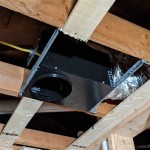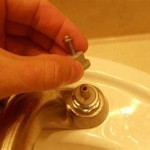Replacing Your Bathroom Fan Vent: A Comprehensive Guide
Bathroom exhaust fans play a crucial role in maintaining a healthy and comfortable bathroom environment. They remove excess moisture, odors, and pollutants, preventing the growth of mold and mildew and improving indoor air quality. Over time, bathroom fan vents can become clogged, damaged, or inefficient, requiring replacement. This guide provides a comprehensive overview of the process of replacing a bathroom fan vent, covering essential steps and considerations.
Understanding Bathroom Fan Vents
Bathroom fan vents are the crucial component that directs the exhausted air outside your home. They are typically made of rigid PVC or ABS plastic and are designed to resist moisture and heat. The vent connects to the fan's exhaust outlet and extends through the roof or wall, ending with a vent cap that prevents rain and debris from entering the system. The vent's length and material will vary based on your home's construction and local building codes.
Why Replace a Bathroom Fan Vent?
Several reasons may necessitate replacing your bathroom fan vent. Common issues include:
- Clogging: Vents can become clogged with dust, debris, and even insects, hindering airflow and reducing fan efficiency.
- Damage: Age, weather, or improper installation can lead to cracks, leaks, or loose connections in the vent, compromising its integrity.
- Inefficiency: Over time, PVC vents can become brittle and lose their ability to conduct air effectively, reducing the fan's performance.
If you notice any of these signs, it's essential to address the problem promptly to prevent further damage and maintain optimal bathroom ventilation.
Preparing for the Replacement
Before beginning the replacement process, gather the necessary tools and materials. You will need:
- A new bathroom fan vent of the appropriate size and material
- A utility knife or saw
- A level
- A measuring tape
- Safety glasses and gloves
- Screwdriver
- Silicone sealant
- Caulk gun
- Ladder (if needed)
Ensure you turn off the power to the bathroom fan at the circuit breaker before starting any work. This precaution safeguards against electric shock and prevents accidental activation of the fan during the replacement process.
Step-by-Step Replacement Guide
Follow these steps to replace your bathroom fan vent:
1. Disconnect the Old Vent
Start by disconnecting the old vent from the fan's exhaust outlet. This typically involves loosening screws or clamps that secure the vent to the fan. If the vent is difficult to remove due to rust or corrosion, consider using a penetrating oil to loosen the connections.
2. Remove the Old Vent
Carefully remove the old vent from the roof or wall, working from the outside in. You might need to cut the vent in sections if it is particularly long or difficult to maneuver. Be cautious to avoid damage to surrounding structures during removal.
3. Install the New Vent
Position the new vent in the same location as the old one, ensuring it is level and properly aligned. Secure the vent using screws or clamps, ensuring a tight connection to prevent air leaks. You may need to adjust the vent's length or use a saw to make precise cuts to fit the existing opening.
4. Connect to the Fan
Connect the new vent to the fan's exhaust outlet, following the manufacturer's instructions. Ensure the connection is secure and airtight to prevent air leakage. If necessary, use silicone sealant to create a waterproof seal around the connection.
5. Seal the Exterior
Seal the exterior of the vent where it passes through the roof or wall. Use silicone sealant or caulk to create a waterproof seal that prevents moisture intrusion. Be sure to smooth out the sealant and allow it to dry completely before turning the power back on.
6. Test the Fan
Once the installation is complete, turn the power back on to the bathroom fan and test its operation. The fan should run smoothly, and you should feel airflow coming from the vent. If the fan is noisy or does not operate correctly, check the connections and ensure they are secure and airtight.
Remember that replacing a bathroom fan vent is often a specialized task. If you are uncertain about any step or encounter difficulties, it is always best to consult a qualified electrician or contractor for assistance.

Install A New Bathroom Vent Fan Light

Venting A Bath Fan In Cold Climate Fine Homebuilding

Installing The Vent For A Bathroom Exhaust Fan

Air Sealing Bathroom And Kitchen Exhaust Fans Building America Solution Center

How To Install A Bathroom Fan Diy Family Handyman

How To Install Clean A Bathroom Fan

How To Replace A Bathroom Exhaust Fan Without Attic Access 12 Step Guide Home Inspector Secrets

Bathroom Fan Venting Tips Gui

Pin On Handyman

How To Install A Bathroom Fan Step By Guide Bob Vila
Related Posts







